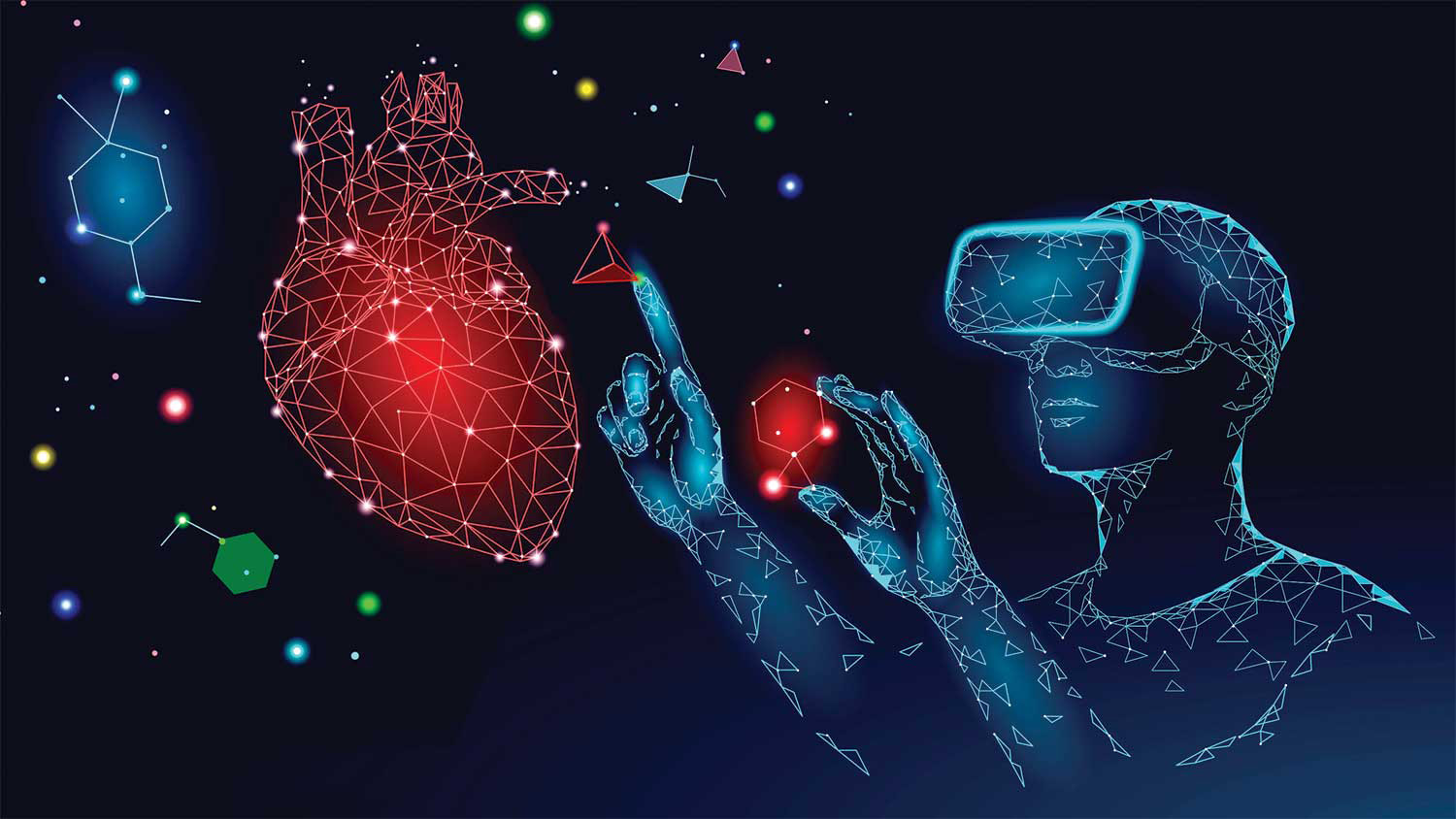Alternate Reality
K-12 teachers may soon be showing their students more than just classroom films.

Amazon shoppers know the feature on the company’s app that allows them to mull the purchase of a new piece of furniture by visually placing it in their room. Hold up your phone’s camera in the space, and the chair magically appears. Voila!
That’s augmented reality, or AR. “AR is really that idea of superimposing the digital on the physical,” says Justin Egresitz, a College of Education Ph.D. student in the learning and teaching in STEM program.
In an article published in Technology and Engineering Teacher, Egresitz suggests AR could soon be coming to a classroom near you. And for those who may question its benefits, Egresitz offers many. The technology makes sense for a generation of students who grew up with computers and their capabilities. AR appeals to an array of learning styles, including those of students who are more kinetic and tactile. And it allows a platform for student discussions evaluating AR’s impact on the economy, society and our interpersonal communication.
Egresitz advocates for AR serving as a valuable classroom tool, using education apps for exploratory learning in grade school and moving into more complex problem-solving and model-building in middle and high school. Students could study and virtually handle a heart or design a functioning zoo.
But using AR in schools would be expensive and potentially lead to inequitable distribution of technology. Then there’s the investment of time. Having a teacher’s commitment is a must for the technology to pay dividends, Egresitz says. But most key, he adds, is a teacher’s willingness to fully integrate AR. “Be intentional about it,” he says, “and go beyond just the ‘oooh, shiny’ of it.”
- Categories:


